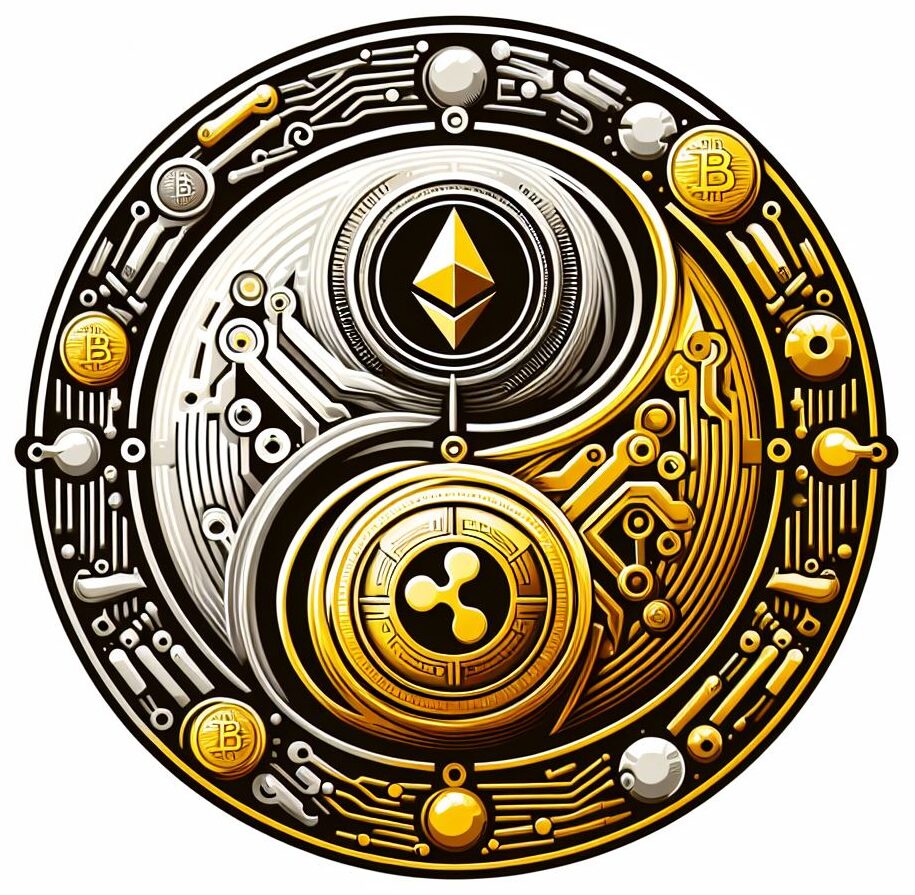If you are newer to the cryptocurrency world, you might be hearing of a lot of different cryptocurrencies and might have many questions, especially of the use cases of cryptocurrencies. Well I be focusing on one of those cryptocurrencies today and a question someone might have is what is the Cardano ecosystem? I’m going to focus on the history of Cardano, the use cases of it, and the possible future growth of Cardano. It may not be as valuable as some of the other cryptos out there, but it is still around and has great potential for future growth.
Cardano’s story kicks off with Charles Hoskinson, one of the original co-founders of Ethereum, who saw an opportunity to improve on the existing blockchain technologies. Realizing there was room for a more sustainable, scalable, and interoperable system, he laid down Cardano’s groundwork in 2015. This marked the birth of a third-generation blockchain platform, aimed at addressing the drawbacks of its predecessors.
The official launch of Cardano happened in September 2017. But it wasn’t just about flashy release events; it involved a detailed five-phase development approach, often referred to as ‘eras’. Starting with Byron, which focused on establishing a solid foundation, to Shelley, where decentralization became a key focus, the project methodically built its infrastructure step-by-step.
Significant milestones can’t go unnoticed as they highlight Cardano’s evolution. The Shelley’s release shifted the network from a federated model to a decentralized one, involving thousands of community-run nodes. This transition was a huge step in boosting network security and reliability, reshaping how we think about blockchain governance.
The Cardano ecosystem keeps growing stronger as it evolves through different phases. Each phase brings its unique brand of innovation, with Goguen introducing smart contracts, Basho improving scalability, and Voltaire emphasizing governance. These eras showcase Cardano’s commitment to creating a robust and adaptable system that can face future challenges head-on.
Exploring the Breadth of Cardano’s Use Cases
Cardano’s use cases are expanding every day, enhancing various sectors with its robust blockchain technology. Decentralized Finance (DeFi) is one of the hotspots where Cardano is making waves. With its secure and efficient network, Cardano is powering innovative DeFi projects, offering new forms of financial solutions beyond traditional banks. Think of lending, borrowing, and using tokens in ways we hadn’t even dreamed possible a decade ago.

Beyond finance, Cardano is diving into the world of education and research. It’s not just about decentralizing information but making education accessible and collaborative. Projects are underway where Cardano’s blockchain could help verify academic credentials, ensuring integrity and reducing fraud across institutions worldwide.
The practical applications don’t stop there. Cardano is also transforming supply chain management. By recording data on an immutable ledger, businesses can ensure transparency and traceability throughout their supply chains. This reduces costs, enhances efficiency, and builds trust between companies and consumers.
In healthcare, Cardano holds promise for securely managing patient records. Having sensitive data on its secure and transparent blockchain ensures patient confidentiality while allowing seamless access to necessary information by authorized users. This could streamline processes, improve patient outcomes, and potentially save lives.
Cardano’s multi-faceted utility is a testament to its designed scalability and adaptability. With an ever-growing list of applications, it’s clear that Cardano can deliver real-world solutions across various industries, making it a powerful tool for today’s and tomorrow’s challenges.
Cardano vs. Ethereum: The Battle of Blockchains
When Cardano stepped into the blockchain arena, many saw it as a potential contender to Ethereum, given its focus on scalability, sustainability, and interoperability. Both platforms have their unique strengths and approaches, which have sparked intense debates in the crypto community.
Ethereum has long been the go-to for deploying smart contracts and DApps. Yet, Cardano brought in a fresh perspective with its peer-reviewed academic research and methodical development. Its two-layer architecture separates the ledger of account values from the reasons why values are transferred, which increases the network’s capability to handle global adoption without sacrificing security.

A big attraction to Cardano is its Ouroboros proof-of-stake consensus algorithm. While Ethereum only recently began transitioning to a proof-of-stake model, Cardano has been operating this way from the get-go. It reduces energy consumption significantly, making Cardano a greener alternative in blockchain technology.
The rivalry isn’t just technical, it’s also philosophical. Ethereum prides itself on speed and flexibility in deployments, while Cardano takes a calculated, research-based approach to mitigate risks and ensure long-term sustainability. These differences attract diverse communities, each passionate about their platform’s underlying principles.
Community opinions often toss these two giants into conversations about blockchain’s future. Some developers appreciate Ethereum’s vast ecosystem, but others are drawn to Cardano’s vision of methodical progression and stability. This competition inspires innovation across both networks, fueling advancements in blockchain technology that could benefit everyone.
The Vibrant World of Cardano Today
In today’s fast-paced digital landscape, Cardano isn’t just sitting on the sidelines. It’s out there, rolling out initiatives and engaging in partnerships that are crafting a buzz across the blockchain community. From education to supply chains, Cardano is developing an ecosystem that expands beyond its core technology.

A major move was its Alonzo upgrade, which introduced smart contract capabilities to the network. Now developers are flocking to Cardano, armed with new tools to create decentralized applications on a robust and scalable blockchain. This upgrade has been a game-changer, setting the stage for the even broader adoption of DeFi applications on Cardano’s ecosystem.
Cardano is forging alliances with organizations across the globe, leveraging blockchain technology to tackle real-world problems. Collaborations in Africa aim to streamline everything from banking the unbanked to tracking agricultural supply chains. It’s not just academic but practical applications that are reshaping social and economic structures.
Developers and entrepreneurs are finding a thriving ecosystem supportive of innovation. Hackathons, developer portals, and educational resources are being set up to draw talent toward Cardano, nurturing a community that’s eager to push the boundaries of what’s possible with blockchain technology.
This vibrant mix of growth and exploration positions Cardano at an exciting juncture, crafting a multifaceted ecosystem that doesn’t just aim for technological advancement but also aims to make a socio-economic impact across various industries worldwide. I currently hold some Cardano tokens will probably add more in the future. The one thing about Cardano is its resiliance. They may not move as fast a other products, but they do make sure their eco system works they way it is intended.
The Future of Cardano: Potential for Growth and Value
Looking at the crypto market can often feel like trying to predict the weather. Yet, there’s a growing sentiment that Cardano’s future might be bright, especially considering its solid foundation and ongoing innovations.
Market analysts often emphasize Cardano’s approach to scalability and sustainability as crucial factors that might lead to a rise in its value. Its focus on enhancing the core network and building a reliable ecosystem could make it more appealing for enterprises seeking efficient blockchain solutions.

Expert forecasts frequently see potential for Cardano’s ADA to increase as the platform expands its reach in various sectors. With more developers building on its network and new projects using its infrastructure, the demand for ADA could rise, opening up possibilities for price appreciation.
Regulatory developments also play a role. As governments worldwide begin to enact clearer legislation surrounding crypto, compliance-ready platforms like Cardano, which prioritize security and sustainability, might become more valuable to investors.
The path forward isn’t without its challenges, but the blend of technical robustness, strategic partnerships, and community-driven development makes Cardano a player to watch in the evolving blockchain arena. For anyone considering a stake in the future of blockchain, keeping an eye on Cardano’s advancements could offer valuable insights. Speaking of Cardano’s advancements, there actually was a HUGE announcement within the last day that might shock people because it also has to do with the number one cryptocurrency in the world right now which is Bitcoin. To read more about it, click here.

